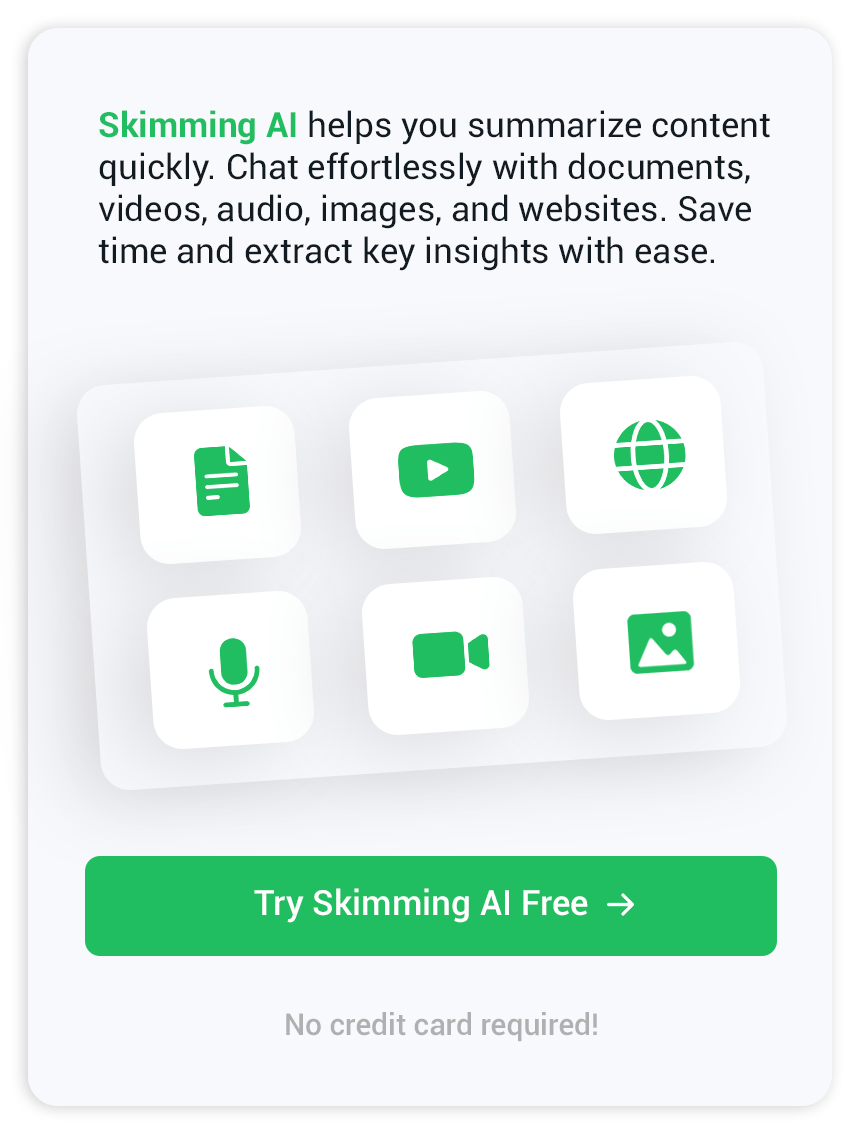AI Picture Summarizer: Turn Images into Instant Insights
Every day, our cameras and screens capture diagrams, chats, receipts, lecture slides, and social posts in stunning detail. That detail is often more than a busy brain can manage, so a growing number of creators and professionals lean on an AI picture summarizer to convert raw visuals into crisp written takeaways. Gone are the hours spent squinting at screenshots or re-typing text from photos. In just seconds, a picture becomes plain language that is easy to scan, quote, and share.
A modern image-to-text summarizer combines computer vision with natural language generation, providing you with far more than basic optical character recognition. It not only recognizes letters but also interprets context, tone, and structure, then distills the essence into clear sentences. Whether you are a student collecting notes or a marketer reviewing user-generated content, the result feels like having an attentive assistant who can read any image aloud without fuss.
The New Way to Understand Images
From Pixels to Meaning
Traditional visual analysis stops at detection, informing you about the objects present. An AI picture summarizer takes the next step by framing those objects inside the scene’s purpose. Is the slide outlining quarterly growth? Does the whiteboard sketch propose a new feature? By mapping pixels to semantic concepts, the tool highlights intent, not just presence.
Why Speed Matters
Markets move quickly, classrooms move even faster, and readers scroll at a record pace. A one-click summary saves mental effort, reduces fatigue, and lets teams act while the information is still fresh—that time dividend compounds when dozens or hundreds of images flow through your workflow each week.
Inside an AI Picture Summarizer
Vision and Language in Tandem
At the core sits a dual-model setup. A vision encoder converts the image into numeric vectors. A language decoder receives those vectors and drafts sentences in everyday speech. Training data pairs millions of pictures with expertly written captions, enabling the system to learn how humans describe visual scenes.
The Role of OCR
Text inside the image—such as slides, memo headers, and handwritten comments—provides context to the language model. Advanced OCR modules detect fonts, margins, line breaks, and even slanted notes on sticky pads. This contextual text anchors the summary, giving it grounding in the author’s original words.
Beyond Text Extraction
Pure transcription is not enough. The summarizer weighs prominence (title text counts more than footnotes), sentiment (a red downward arrow signals loss), and layout (headline, body, legend). The final output feels like a short article rather than a laundry list.
Leading AI Picture Summarizers to Try
- Skimming AI free image summarizer — Deep learning, fast processing, and a frictionless drag-and-drop interface. Try it here: Skimming AI
- NoteGPT Image Summary — A browser-based tool that pairs OCR with a chat-style assistant for follow-up questions.
- Picture to Summary AI — Offers multiple “tone” presets so the same image can be shortened for formal reports or casual posts.
- StudyHobby Snapshot Summary — Adds multilingual translation, making lecture slides in any language approachable for international students.
- iWeaver Visual Digest — Integrates with cloud drives and meeting archives, making it useful when images accumulate in shared folders.
Matching Needs with Features
Volume and Throughput
High-volume users should check for batch uploads and background processing so that summaries arrive in your inbox while you continue working.
Security and Privacy
Images may contain personal data or trade secrets. Look for end-to-end encryption, local processing, or strict deletion policies before choosing a provider.
Workflow Integration
Native plugins for Google Drive, Slack, or project-management suites reduce friction. Some tools even auto-label summaries, easing file searches later on.
Practical Use Cases
Education and Study Aids
Students snap pics of whiteboards, diagrams, or textbook pages. Summaries condense those visuals into mnemonic notes, freeing time for reflection instead of transcription.
Accessibility and Inclusion
Screen readers convert text summaries into audio, providing visually impaired users with faster access to photographic content that was previously inaccessible.
Compliance and Research
Auditors archive digital receipts, lab experts catalog microscope images, and legal reviewers scan document exhibits. Summaries add searchable keywords and context, cutting retrieval time.
The Road Ahead for Visual Summarization
Multimodal AI models continue to shrink in size while enhancing their contextual understanding. Soon, a phone-based summarizer will handle images offline, safeguarding privacy and cutting latency to a fraction of a second. Expect richer outputs, too—mind maps, highlighted key points, or flash-card exports generated alongside the text.
One signal is already clear: as visuals surge, the written word remains the quickest path to understanding. Pairing a dependable image-to-text summarizer with your daily toolkit translates that surge into actionable knowledge.
Enjoy turning your following screenshot into insight. Drop an image into a summarizer, skim the brief, and carry on with fresh confidence.


